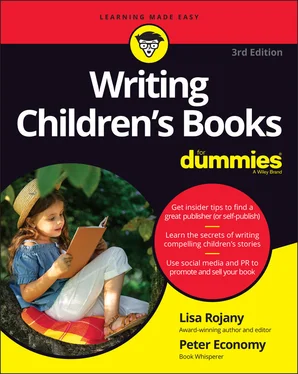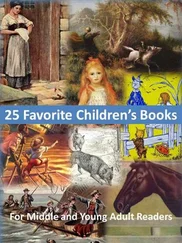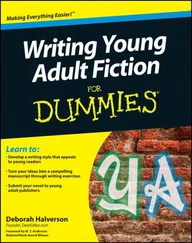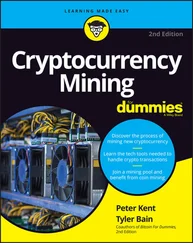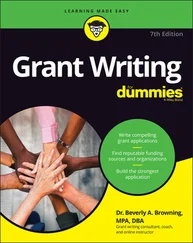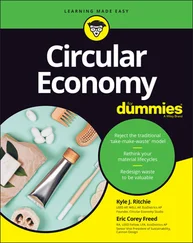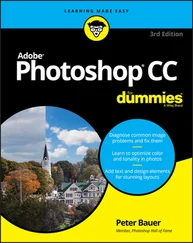Peter Economy - Writing Children's Books For Dummies
Здесь есть возможность читать онлайн «Peter Economy - Writing Children's Books For Dummies» — ознакомительный отрывок электронной книги совершенно бесплатно, а после прочтения отрывка купить полную версию. В некоторых случаях можно слушать аудио, скачать через торрент в формате fb2 и присутствует краткое содержание. Жанр: unrecognised, на английском языке. Описание произведения, (предисловие) а так же отзывы посетителей доступны на портале библиотеки ЛибКат.
- Название:Writing Children's Books For Dummies
- Автор:
- Жанр:
- Год:неизвестен
- ISBN:нет данных
- Рейтинг книги:4 / 5. Голосов: 1
-
Избранное:Добавить в избранное
- Отзывы:
-
Ваша оценка:
- 80
- 1
- 2
- 3
- 4
- 5
Writing Children's Books For Dummies: краткое содержание, описание и аннотация
Предлагаем к чтению аннотацию, описание, краткое содержание или предисловие (зависит от того, что написал сам автор книги «Writing Children's Books For Dummies»). Если вы не нашли необходимую информацию о книге — напишите в комментариях, мы постараемся отыскать её.
Writing Children’s Books For Dummies,
For Dummies
Writing Children’s Books For Dummies
Writing Children's Books For Dummies — читать онлайн ознакомительный отрывок
Ниже представлен текст книги, разбитый по страницам. Система сохранения места последней прочитанной страницы, позволяет с удобством читать онлайн бесплатно книгу «Writing Children's Books For Dummies», без необходимости каждый раз заново искать на чём Вы остановились. Поставьте закладку, и сможете в любой момент перейти на страницу, на которой закончили чтение.
Интервал:
Закладка:
Spine: The part of the book that usually hides the binding, which is where the pages are glued or sewn together. The spine is between both covers and usually displays, at minimum, the title, the author’s and illustrator’s last names, and the publisher’s name or logo.
Jacket: A separate piece of heavy-stock removable paper that you can wrap around the cover and tuck under the front and back covers of the book. The jacket can repeat all the information and images found on the front cover. But sometimes the book’s actual hardcover has only the title, the author’s name, the illustrator’s name (if there is one), and the publisher’s logo on the spine (which often occurs in picture books and hardcover young adult novels). In these cases, the jacket provides all the images and publishing information, including the title, credits, sell copy, author and illustrator bios, and dedication.Specifically, the front flap of the jacket usually has sell copy; the back flap of the jacket often has author (and illustrator) bios.
Pages: The sheets of paper onto which they print your story and any illustrations. Most children’s books are published in signatures (groups) of 8 pages each because of the way that the bindery prints, folds, and then cuts the pages. For this reason, most children’s picture books and leveled readers have pages in denominations of 8: such as 24 or 32 pages, 48 or 64 pages. While you move up into books that have chapters, the signatures are 16 pages long, so those book pages come in multiples of 16.
Trim: Also called trim size; the dimensions of the book. Page trim refers to the size of the book’s interior pages. Cover trim refers to the size of the cover, which may be larger than or the same size as the page trim.
Endpapers: The double leaves of paper added at the front and back of the book before it’s bound. Most of the time, endpapers are added to the book after it’s printed. The binder pastes the outer leaf of each page to the inner surface of the cover (they call this process the paste-down ), the inner leaves (or free endpapers) form the first and last pages of the book when bound. Endpapers are mostly of heavier-stock paper than the rest of the text pages, and they’re often decorated or filled with mini-illustrations.
Front matter: The material that comes before the text or story of a book, including the title and copyright pages, a table of contents, an introduction, a dedication, and sometimes acknowledgments. Sometimes, the publisher makes the design decision to move this information to the back of the book.
Back matter: Various sections that come after the main text, mostly supporting material. For example, acknowledgements, an index, citations, a glossary, additional information about the creation of the story (if relevant), or more factual information about the story that can add to the reader’s experience (though this type of back matter is less common in fiction).
Spread: The left page and the right page of an open book constitute a spread. For example, pages 2 and 3 in a picture book usually constitute spread 1, pages 4 and 5 are spread 2, and so on.
Grouping Types of Children’s Books
You can group children’s books into two overarching categories:
Fiction: Made-up stories; a big plate onto which other derivative (and delicious!) morsels may fall
Nonfiction: Writing based on real facts, people, places, or events
Within those categories, you can also divide children’s books into formats based on the various ages the books serve, as well as the book’s size, shape, and content. Some examples of formats include picture books, board books, chapter books, and young adult (YA) books.
Formats help publishers group their titles by age appropriateness (meaning where children are developmentally), physical characteristics, or both. These groupings, in turn, help children’s book readers know what type of books will appeal to children in particular age ranges, or with certain interests or goals.
 Always refer to your work’s title and the format together — in the same sentence — when talking to agents and publishers. Say something such as, “ Alphababies is a 300-word board book that uses photographs of babies to teach the alphabet to toddlers.” With that information, the person reviewing your work can immediately identify the format into which your book falls.
Always refer to your work’s title and the format together — in the same sentence — when talking to agents and publishers. Say something such as, “ Alphababies is a 300-word board book that uses photographs of babies to teach the alphabet to toddlers.” With that information, the person reviewing your work can immediately identify the format into which your book falls.
 Many writers can’t figure out their format until they actually write their story down. But other writers find it helpful to know the parameters of the various formats ahead of time. Those constraints help them make decisions along the way about plot complexity, word count, vocabulary level, and other elements that go into defining a format. Just because you know about formats doesn’t mean you have to choose one before you start writing your book. You also can’t squeeze just any story into any format.
Many writers can’t figure out their format until they actually write their story down. But other writers find it helpful to know the parameters of the various formats ahead of time. Those constraints help them make decisions along the way about plot complexity, word count, vocabulary level, and other elements that go into defining a format. Just because you know about formats doesn’t mean you have to choose one before you start writing your book. You also can’t squeeze just any story into any format.
Note: Publishers often release downloadable digital copies and e-book versions simultaneously with the print versions across many children’s book formats. This is so consumers have many choices in how they read the book.
Illustrated Books for All Ages
What we loosely refer to as “books with pictures” describes any of the formats that focus mainly on heavy illustration and few words. Books that have pictures are therefore perfect for babies and growing toddlers, as well as in formats such as graphic novels and some middle-grade fiction. We walk you through the various formats that we consider books with pictures in the following sections.
 You may notice as you read that many of the skills required to break into children’s book writing for any format or age group sound alike. Well, you’re right on target. In Part 3, we discuss how the same basic elements of good writing apply for any format, age group, or subject, and for fiction or nonfiction. Good writing is good writing. Period.
You may notice as you read that many of the skills required to break into children’s book writing for any format or age group sound alike. Well, you’re right on target. In Part 3, we discuss how the same basic elements of good writing apply for any format, age group, or subject, and for fiction or nonfiction. Good writing is good writing. Period.
Baby-friendly board books
Get yourself a chunky book with a heavy stock, rounded corners, and bright, eye-catching pictures, and you’ve got yourself a board book (see Figure 2-1). Perfect gifts for little ones, these books are for the youngest readers — so young, in fact, that they don’t even read yet! What’s Wrong, Little Pookie? by Sandra Boynton (Little Simon) and indeed most of Boynton’s books are published as board books. Fabulous picture books that are republished as board books include Goodnight Moon and Runaway Bunny, both by Margaret Wise Brown (HarperFestival), Jamberry by Bruce Degen (HarperFestival), and Hug by Jez Alborough (Candlewick Press).

a) Why Is Baby Grumpy? by Joey Spiotto. Copyright © 2021 by Joey Spiotto. Reprinted by permission of Scholastic Inc. b) ROAR: A Dinosaur Tour © 2018 and c) CHOMP: A Shark Romp © 2019 by Michael Paul. Reprinted with permission of the author/illustrator Michael Paul, and Penguin Random House.
FIGURE 2-1:Example board books.
We fill you in on the basics of board books — and how to write a great one — in the following sections.
Читать дальшеИнтервал:
Закладка:
Похожие книги на «Writing Children's Books For Dummies»
Представляем Вашему вниманию похожие книги на «Writing Children's Books For Dummies» списком для выбора. Мы отобрали схожую по названию и смыслу литературу в надежде предоставить читателям больше вариантов отыскать новые, интересные, ещё непрочитанные произведения.
Обсуждение, отзывы о книге «Writing Children's Books For Dummies» и просто собственные мнения читателей. Оставьте ваши комментарии, напишите, что Вы думаете о произведении, его смысле или главных героях. Укажите что конкретно понравилось, а что нет, и почему Вы так считаете.
